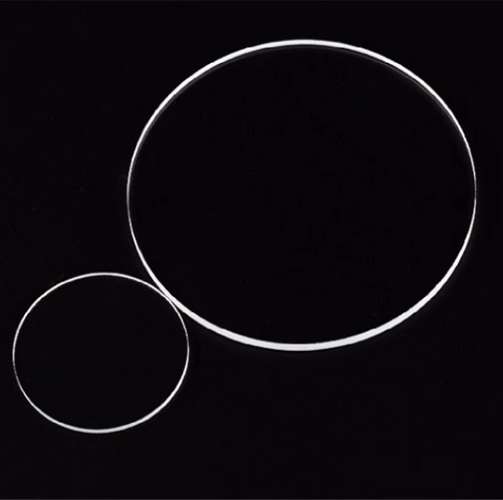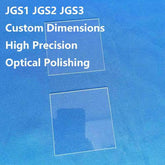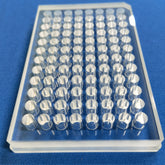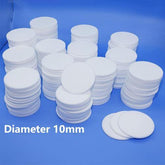The performance of sapphire glass in the field of photoelectric components
Material science represents an essential component in the promotion of technological progress, with an ongoing emergence of novel materials that capture the attentions of the public. Among these novel materials, sapphire glass has become a key component in the field of photoelectric components due to its distinctive lattice structure, exceptional mechanical properties and superior thermal properties. It is a material with significant potential for scientific and technological innovation, as well as for practical applications.
1.Distinctive lattice structure
The distinctive lattice structure of sapphire is the foundation for a multitude of its exceptional properties. This lattice structure is composed of tightly packed aluminium and oxygen ions that form a highly ordered and stable network, endowing sapphire glass with enhanced hardness, along with notable resistance to wear and scratching. In the context of optoelectronic components, this property is beneficial in terms of effective resistance to small particles and the effects of daily wear in external environments. It also provides protection for internal precision components from damage and contributes to an extended equipment life.

2. Exceptional mechanical properties
In addition to its hardness, sapphire also exhibits a range of remarkable mechanical properties. Not only is it capable of withstanding high pressure without fracturing, but it also demonstrates excellent toughness within a certain range, due to the energy dissipation mechanism inherent in its lattice structure. In the field of optoelectronic components, this performance is of particular significance. The mechanical properties of sapphire glass make it an ideal material for use in a variety of electronic devices, including smartphones, smartwatches, and camera lenses, as it can provide reliable protection for these devices while ensuring a smooth and comfortable user experience.

3. Excellent thermal properties
Furthermore, the thermal characteristics of sapphire are also worthy of note. Due to its high thermal conductivity and low coefficient of thermal expansion, sapphire glass is capable of maintaining dimensional and thermal stability in environments with significant temperature fluctuations. This quality is of particular importance for photoelectric components, as it ensures their functionality is not compromised by external temperature changes. In an environment characterized by elevated temperatures, a multitude of materials will undergo thermal expansion, which can result in a reduction in performance or even a complete failure. Sapphire glass, however, is capable of effectively resisting this effect, thereby ensuring the stable operation of photoelectric components. Additionally, its high thermal conductivity facilitates the dissipation of heat, thereby lowering the temperature of the apparatus during operational periods, and enhancing the efficiency and lifespan of the device.

4. An optimal selection for photoelectric components
In light of the aforementioned characteristics, sapphire glass is becoming increasingly prevalent in the domain of photoelectric components. In the field of LED lighting, the use of sapphire glass as the substrate for LED chips has been demonstrated to significantly enhance both the luminous efficiency and stability of the lighting, thereby facilitating innovation in this technology. In the field of smartphones and tablets, sapphire screens bring users a clearer and durable visual experience with their hardness and wear resistance. In addition, in the fields of camera lenses, spacecraft windows, medical equipment, etc., sapphire glass also plays a role with its unique advantages.
Despite the promising potential of sapphire glass in the field of photoelectric components, the high production cost and processing difficulties associated with it continue to impede its large-scale implementation. Presently, researchers are endeavoring to reduce costs by optimizing production processes, minimizing energy consumption, and enhancing production efficiency. Concurrently, the advancement of technology has prompted the investigation of novel approaches to combining sapphire glass with other materials with the objective of developing composite materials that exhibit enhanced performance and a more rational cost structure.






